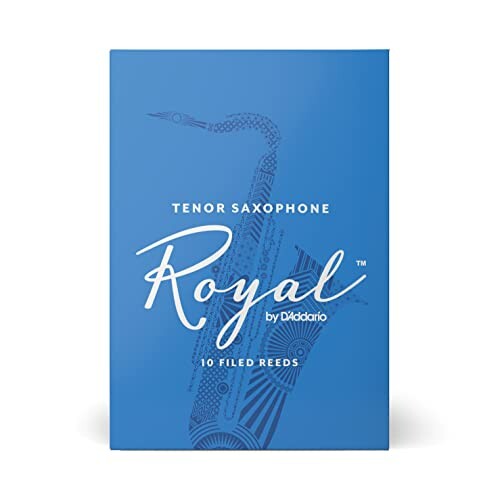
Understanding Saxophone Reeds: A Beginner's Guide
- Saxophone reeds are crucial for sound production and playability.
- Different types of reeds affect tone and response in various ways.
- Choosing the right reed depends on skill level, music style, and personal preference.
- Care and maintenance of reeds can greatly enhance their lifespan and performance.
Welcome to our beginner's guide on saxophone reeds! If you're just starting out with your tenor saxophone, understanding reeds is essential to ensuring a great playing experience. This guide will break down everything you need to know about saxophone reeds, their types, how they affect your sound, and tips for selecting the right one.
What are saxophone reeds?
Saxophone reeds are small, thin pieces of cane that vibrate to produce sound when air is blown through the instrument. Each reed fits onto the mouthpiece of your saxophone and plays a significant role in determining your overall sound quality.
Types of saxophone reeds
There are various types of saxophone reeds available tailored for different styles and preferences. Below is a table summarizing the most common types:
| Reed Type | Material | Features |
|---|---|---|
| Cane Reeds | Cane | Traditional choice with varied strengths for different playing levels. |
| Synthetic Reeds | Plastic/Composite | Durable, resistant to moisture, and often require less maintenance. |
| Filed Reeds | Cane | Provide a richer tone and more control, ideal for advanced players. |
| Unfiled Reeds | Cane | Offer a brighter and more focused sound, often chosen by jazz musicians. |
How do reeds impact sound?
The strength and quality of your saxophone reed significantly influence your sound. Here’s how:
- Strength: Reeds come in various strengths (typically from 1 to 5). A stronger reed requires more air pressure but can produce a fuller sound, while a weaker reed allows for easier playability but may sacrifice some tonal quality.
- Material: Most beginners start with cane reeds, but synthetic options are becoming popular due to their durability and consistent performance.
- Shape and Cut: Different cuts can affect response time and sound projection, making certain reeds better suited for specific musical styles.
Choosing the right reed for your tenor saxophone
Choosing the right reed can be a daunting task for beginners. Here are some key points to consider:
Pros
- Improved sound quality with the right choice
- Easier playability, especially for beginners
- Greater enjoyment and confidence while playing
Cons
- Cost of high-quality reeds can add up
- Finding the ideal reed may take time and experimentation
Reed care and maintenance
Proper care can extend the life of your reeds. Here are some tips:
- Store properly: Keep reeds in a protective case to avoid damage.
- Moisten before playing: Always wet your reeds before use to ensure optimal playability.
- Don't bite down: Excessive biting can cause premature wear. Use your embouchure correctly instead.
- Rotate reeds: Using multiple reeds can prevent any single reed from wearing out too quickly.
Recommended saxophone reeds
D'Addario Woodwinds - Royal Tenor Saxophone Reeds
These reeds offer ease of response and great clarity in sound, making them perfect for both jazz and classical music styles.
Learn MoreConclusion
In conclusion, understanding saxophone reeds is crucial for any beginner looking to enhance their saxophone skills. By selecting the right type of reed, maintaining them properly, and experimenting with different options, you can significantly impact your sound quality and overall playing experience.
Don't forget to explore more of our resources such as the Tenor Saxophone Buying Guide and the Saxophone Accessories page for additional insights and recommendations!
